HR Analysis: Motivation Theories & Interview Process Improvement
VerifiedAdded on 2023/06/08
|7
|1107
|268
Report
AI Summary
This report analyzes motivation theories, specifically Maslow’s hierarchy of needs and the expectancy theory, to understand the causes of poor motivation among production workers, highlighting issues such as job insecurity and inadequate reward structures. It also investigates the shortcomings of structured interview processes in HR, pointing out their rigidity and inability to assess diverse skill sets, leading to poor new hire selections. Recommendations include making the interview process more dynamic, tailoring questions to job requirements, and continuously updating the interview structure to improve reliability and validity in employee selection. This assignment is available on Desklib, a platform offering AI-based study tools and a wide range of solved assignments for students.
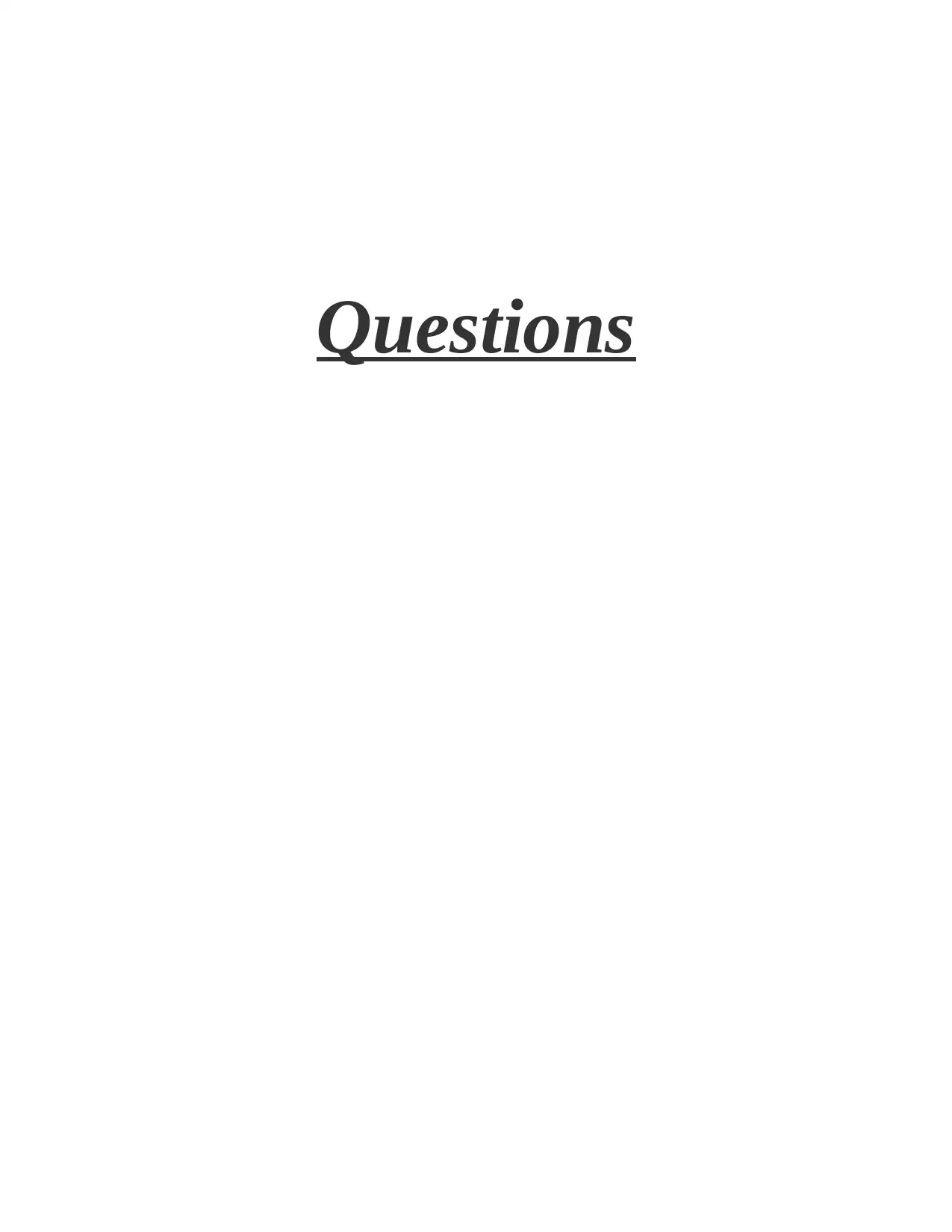
Questions
Paraphrase This Document
Need a fresh take? Get an instant paraphrase of this document with our AI Paraphraser
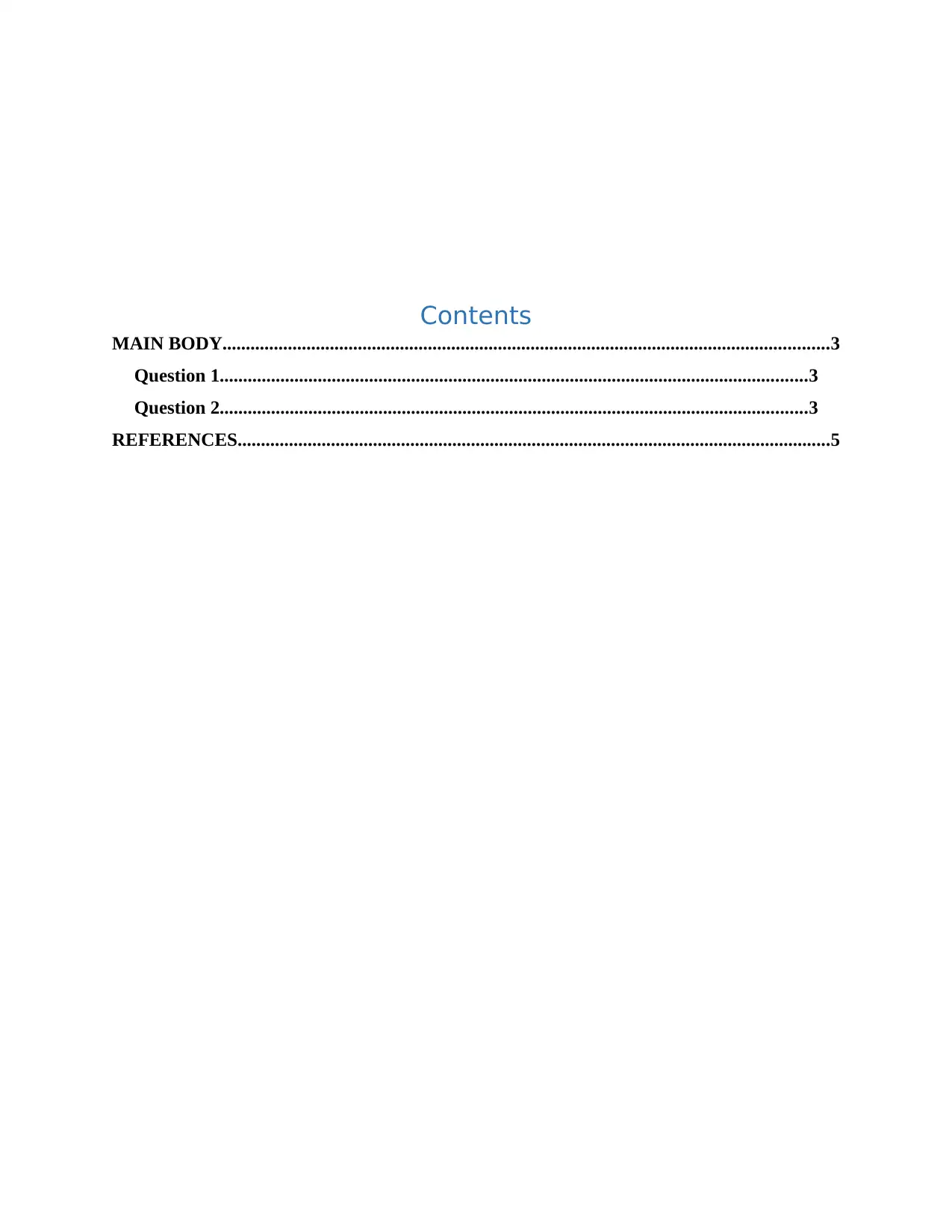
Contents
MAIN BODY..................................................................................................................................3
Question 1..............................................................................................................................3
Question 2..............................................................................................................................3
REFERENCES...............................................................................................................................5
MAIN BODY..................................................................................................................................3
Question 1..............................................................................................................................3
Question 2..............................................................................................................................3
REFERENCES...............................................................................................................................5
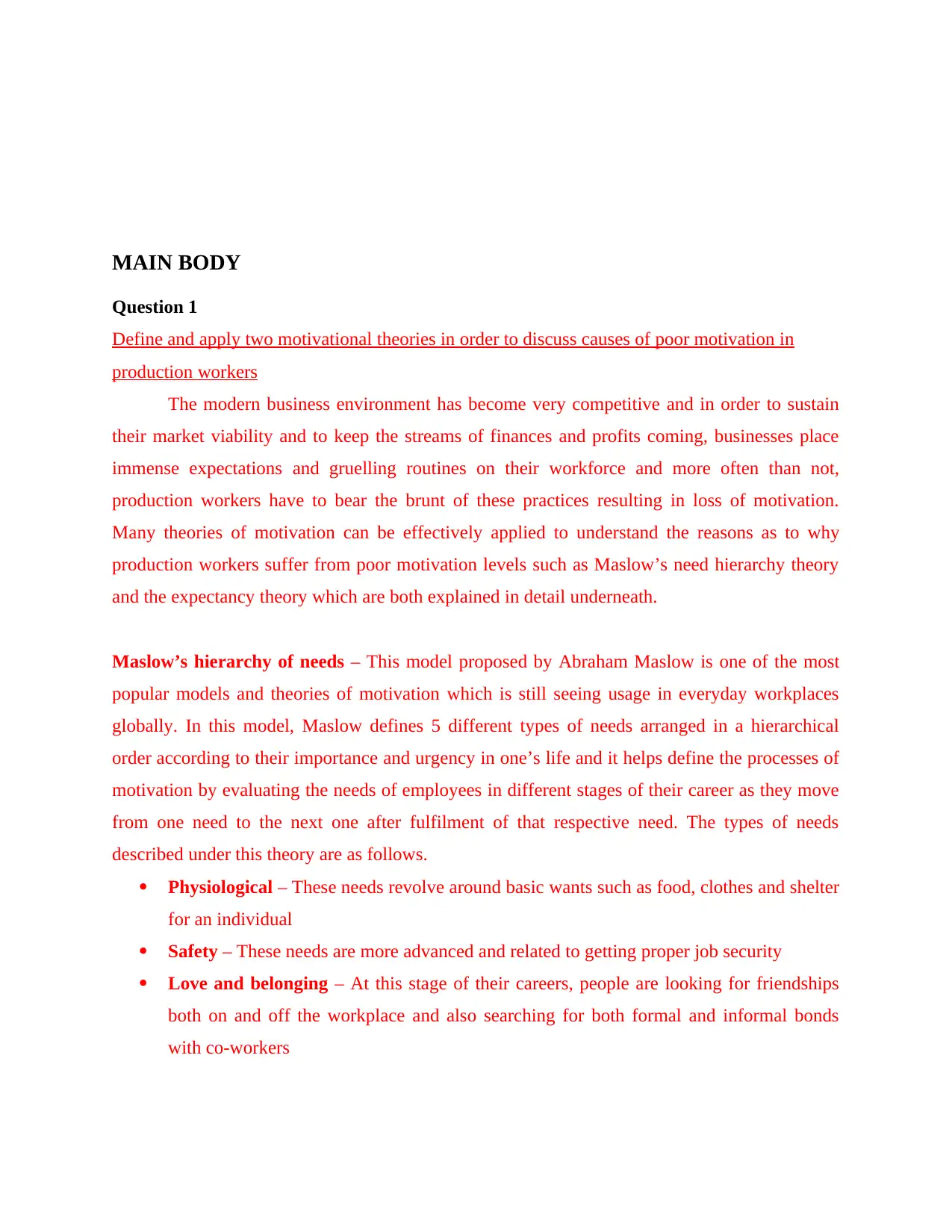
MAIN BODY
Question 1
Define and apply two motivational theories in order to discuss causes of poor motivation in
production workers
The modern business environment has become very competitive and in order to sustain
their market viability and to keep the streams of finances and profits coming, businesses place
immense expectations and gruelling routines on their workforce and more often than not,
production workers have to bear the brunt of these practices resulting in loss of motivation.
Many theories of motivation can be effectively applied to understand the reasons as to why
production workers suffer from poor motivation levels such as Maslow’s need hierarchy theory
and the expectancy theory which are both explained in detail underneath.
Maslow’s hierarchy of needs – This model proposed by Abraham Maslow is one of the most
popular models and theories of motivation which is still seeing usage in everyday workplaces
globally. In this model, Maslow defines 5 different types of needs arranged in a hierarchical
order according to their importance and urgency in one’s life and it helps define the processes of
motivation by evaluating the needs of employees in different stages of their career as they move
from one need to the next one after fulfilment of that respective need. The types of needs
described under this theory are as follows.
Physiological – These needs revolve around basic wants such as food, clothes and shelter
for an individual
Safety – These needs are more advanced and related to getting proper job security
Love and belonging – At this stage of their careers, people are looking for friendships
both on and off the workplace and also searching for both formal and informal bonds
with co-workers
Question 1
Define and apply two motivational theories in order to discuss causes of poor motivation in
production workers
The modern business environment has become very competitive and in order to sustain
their market viability and to keep the streams of finances and profits coming, businesses place
immense expectations and gruelling routines on their workforce and more often than not,
production workers have to bear the brunt of these practices resulting in loss of motivation.
Many theories of motivation can be effectively applied to understand the reasons as to why
production workers suffer from poor motivation levels such as Maslow’s need hierarchy theory
and the expectancy theory which are both explained in detail underneath.
Maslow’s hierarchy of needs – This model proposed by Abraham Maslow is one of the most
popular models and theories of motivation which is still seeing usage in everyday workplaces
globally. In this model, Maslow defines 5 different types of needs arranged in a hierarchical
order according to their importance and urgency in one’s life and it helps define the processes of
motivation by evaluating the needs of employees in different stages of their career as they move
from one need to the next one after fulfilment of that respective need. The types of needs
described under this theory are as follows.
Physiological – These needs revolve around basic wants such as food, clothes and shelter
for an individual
Safety – These needs are more advanced and related to getting proper job security
Love and belonging – At this stage of their careers, people are looking for friendships
both on and off the workplace and also searching for both formal and informal bonds
with co-workers
⊘ This is a preview!⊘
Do you want full access?
Subscribe today to unlock all pages.

Trusted by 1+ million students worldwide
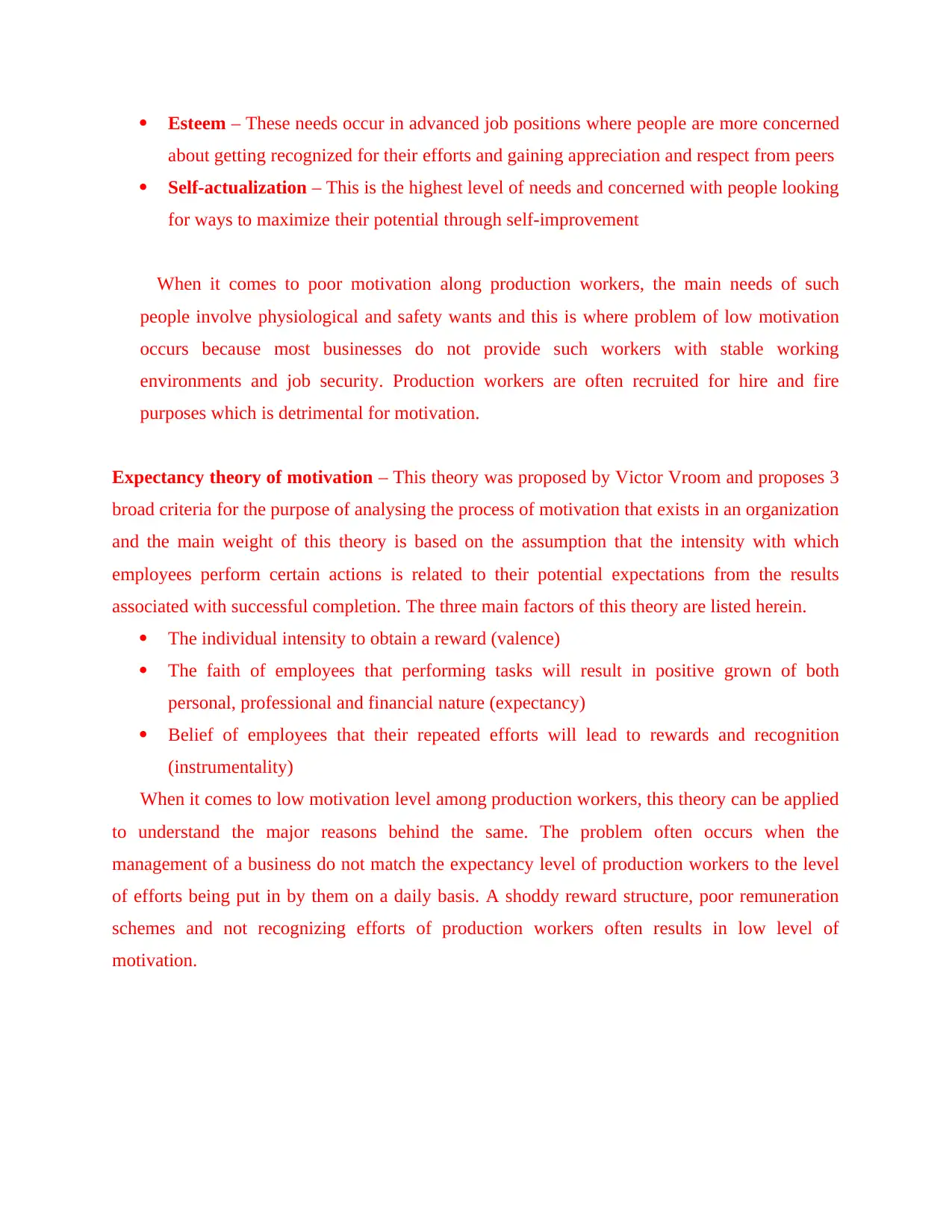
Esteem – These needs occur in advanced job positions where people are more concerned
about getting recognized for their efforts and gaining appreciation and respect from peers
Self-actualization – This is the highest level of needs and concerned with people looking
for ways to maximize their potential through self-improvement
When it comes to poor motivation along production workers, the main needs of such
people involve physiological and safety wants and this is where problem of low motivation
occurs because most businesses do not provide such workers with stable working
environments and job security. Production workers are often recruited for hire and fire
purposes which is detrimental for motivation.
Expectancy theory of motivation – This theory was proposed by Victor Vroom and proposes 3
broad criteria for the purpose of analysing the process of motivation that exists in an organization
and the main weight of this theory is based on the assumption that the intensity with which
employees perform certain actions is related to their potential expectations from the results
associated with successful completion. The three main factors of this theory are listed herein.
The individual intensity to obtain a reward (valence)
The faith of employees that performing tasks will result in positive grown of both
personal, professional and financial nature (expectancy)
Belief of employees that their repeated efforts will lead to rewards and recognition
(instrumentality)
When it comes to low motivation level among production workers, this theory can be applied
to understand the major reasons behind the same. The problem often occurs when the
management of a business do not match the expectancy level of production workers to the level
of efforts being put in by them on a daily basis. A shoddy reward structure, poor remuneration
schemes and not recognizing efforts of production workers often results in low level of
motivation.
about getting recognized for their efforts and gaining appreciation and respect from peers
Self-actualization – This is the highest level of needs and concerned with people looking
for ways to maximize their potential through self-improvement
When it comes to poor motivation along production workers, the main needs of such
people involve physiological and safety wants and this is where problem of low motivation
occurs because most businesses do not provide such workers with stable working
environments and job security. Production workers are often recruited for hire and fire
purposes which is detrimental for motivation.
Expectancy theory of motivation – This theory was proposed by Victor Vroom and proposes 3
broad criteria for the purpose of analysing the process of motivation that exists in an organization
and the main weight of this theory is based on the assumption that the intensity with which
employees perform certain actions is related to their potential expectations from the results
associated with successful completion. The three main factors of this theory are listed herein.
The individual intensity to obtain a reward (valence)
The faith of employees that performing tasks will result in positive grown of both
personal, professional and financial nature (expectancy)
Belief of employees that their repeated efforts will lead to rewards and recognition
(instrumentality)
When it comes to low motivation level among production workers, this theory can be applied
to understand the major reasons behind the same. The problem often occurs when the
management of a business do not match the expectancy level of production workers to the level
of efforts being put in by them on a daily basis. A shoddy reward structure, poor remuneration
schemes and not recognizing efforts of production workers often results in low level of
motivation.
Paraphrase This Document
Need a fresh take? Get an instant paraphrase of this document with our AI Paraphraser
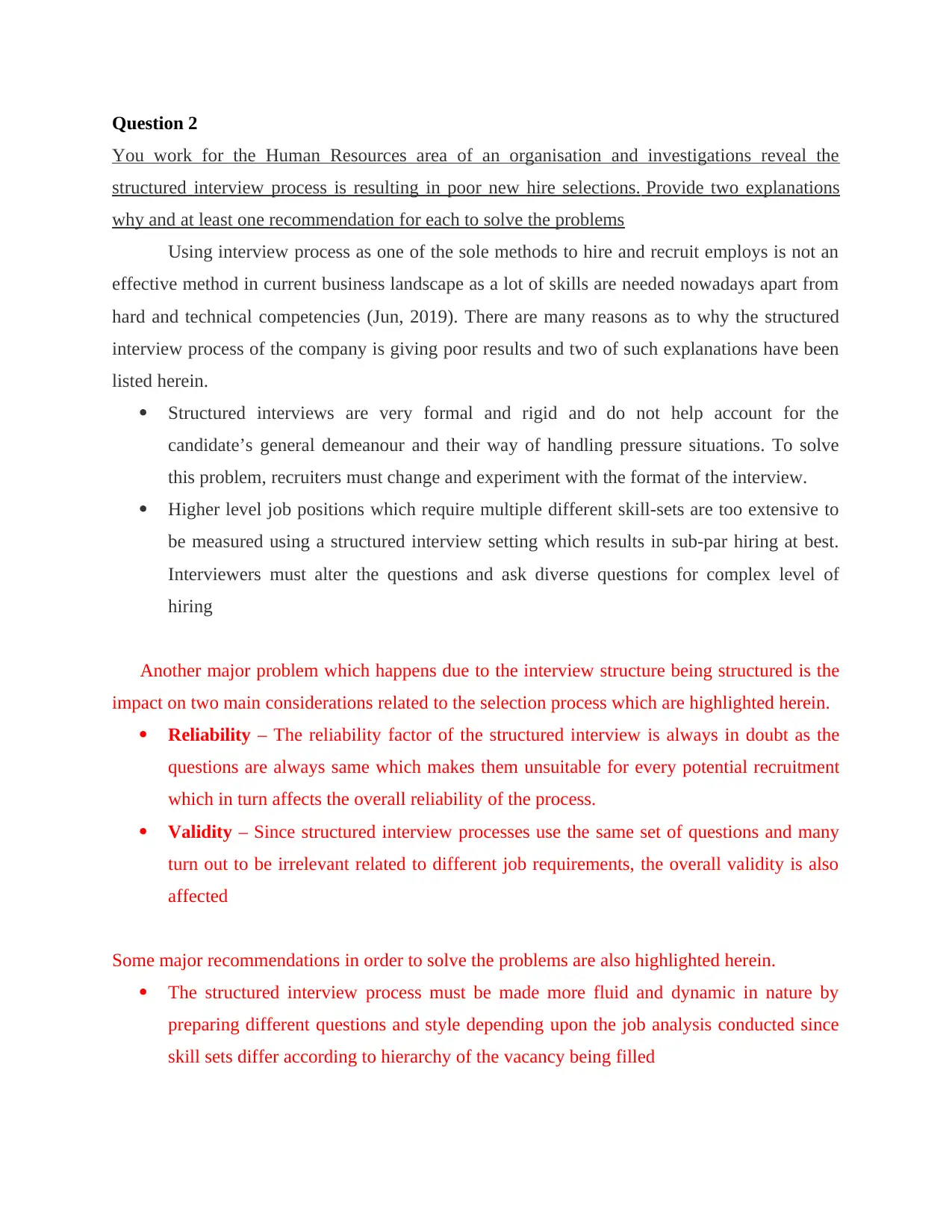
Question 2
You work for the Human Resources area of an organisation and investigations reveal the
structured interview process is resulting in poor new hire selections. Provide two explanations
why and at least one recommendation for each to solve the problems
Using interview process as one of the sole methods to hire and recruit employs is not an
effective method in current business landscape as a lot of skills are needed nowadays apart from
hard and technical competencies (Jun, 2019). There are many reasons as to why the structured
interview process of the company is giving poor results and two of such explanations have been
listed herein.
Structured interviews are very formal and rigid and do not help account for the
candidate’s general demeanour and their way of handling pressure situations. To solve
this problem, recruiters must change and experiment with the format of the interview.
Higher level job positions which require multiple different skill-sets are too extensive to
be measured using a structured interview setting which results in sub-par hiring at best.
Interviewers must alter the questions and ask diverse questions for complex level of
hiring
Another major problem which happens due to the interview structure being structured is the
impact on two main considerations related to the selection process which are highlighted herein.
Reliability – The reliability factor of the structured interview is always in doubt as the
questions are always same which makes them unsuitable for every potential recruitment
which in turn affects the overall reliability of the process.
Validity – Since structured interview processes use the same set of questions and many
turn out to be irrelevant related to different job requirements, the overall validity is also
affected
Some major recommendations in order to solve the problems are also highlighted herein.
The structured interview process must be made more fluid and dynamic in nature by
preparing different questions and style depending upon the job analysis conducted since
skill sets differ according to hierarchy of the vacancy being filled
You work for the Human Resources area of an organisation and investigations reveal the
structured interview process is resulting in poor new hire selections. Provide two explanations
why and at least one recommendation for each to solve the problems
Using interview process as one of the sole methods to hire and recruit employs is not an
effective method in current business landscape as a lot of skills are needed nowadays apart from
hard and technical competencies (Jun, 2019). There are many reasons as to why the structured
interview process of the company is giving poor results and two of such explanations have been
listed herein.
Structured interviews are very formal and rigid and do not help account for the
candidate’s general demeanour and their way of handling pressure situations. To solve
this problem, recruiters must change and experiment with the format of the interview.
Higher level job positions which require multiple different skill-sets are too extensive to
be measured using a structured interview setting which results in sub-par hiring at best.
Interviewers must alter the questions and ask diverse questions for complex level of
hiring
Another major problem which happens due to the interview structure being structured is the
impact on two main considerations related to the selection process which are highlighted herein.
Reliability – The reliability factor of the structured interview is always in doubt as the
questions are always same which makes them unsuitable for every potential recruitment
which in turn affects the overall reliability of the process.
Validity – Since structured interview processes use the same set of questions and many
turn out to be irrelevant related to different job requirements, the overall validity is also
affected
Some major recommendations in order to solve the problems are also highlighted herein.
The structured interview process must be made more fluid and dynamic in nature by
preparing different questions and style depending upon the job analysis conducted since
skill sets differ according to hierarchy of the vacancy being filled
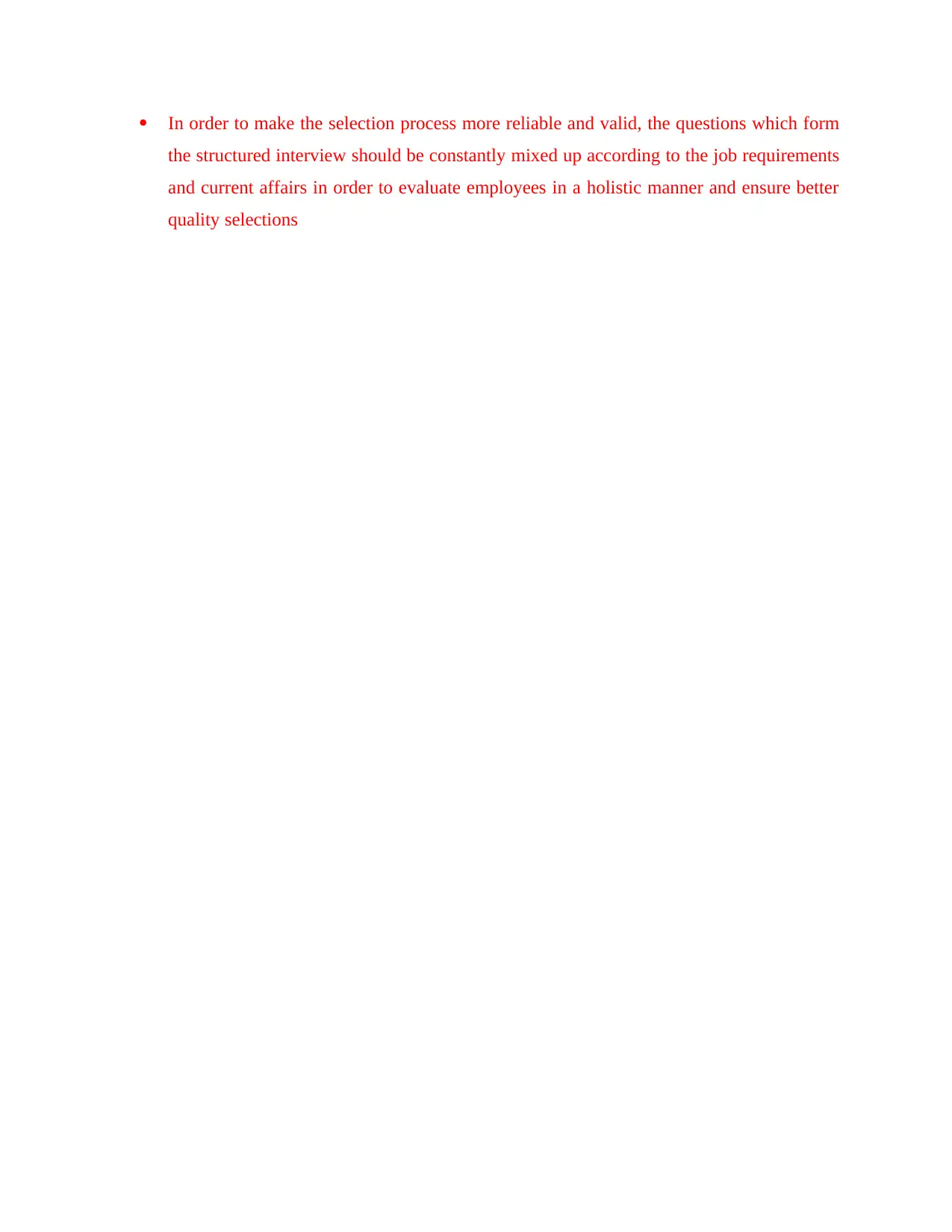
In order to make the selection process more reliable and valid, the questions which form
the structured interview should be constantly mixed up according to the job requirements
and current affairs in order to evaluate employees in a holistic manner and ensure better
quality selections
the structured interview should be constantly mixed up according to the job requirements
and current affairs in order to evaluate employees in a holistic manner and ensure better
quality selections
⊘ This is a preview!⊘
Do you want full access?
Subscribe today to unlock all pages.

Trusted by 1+ million students worldwide
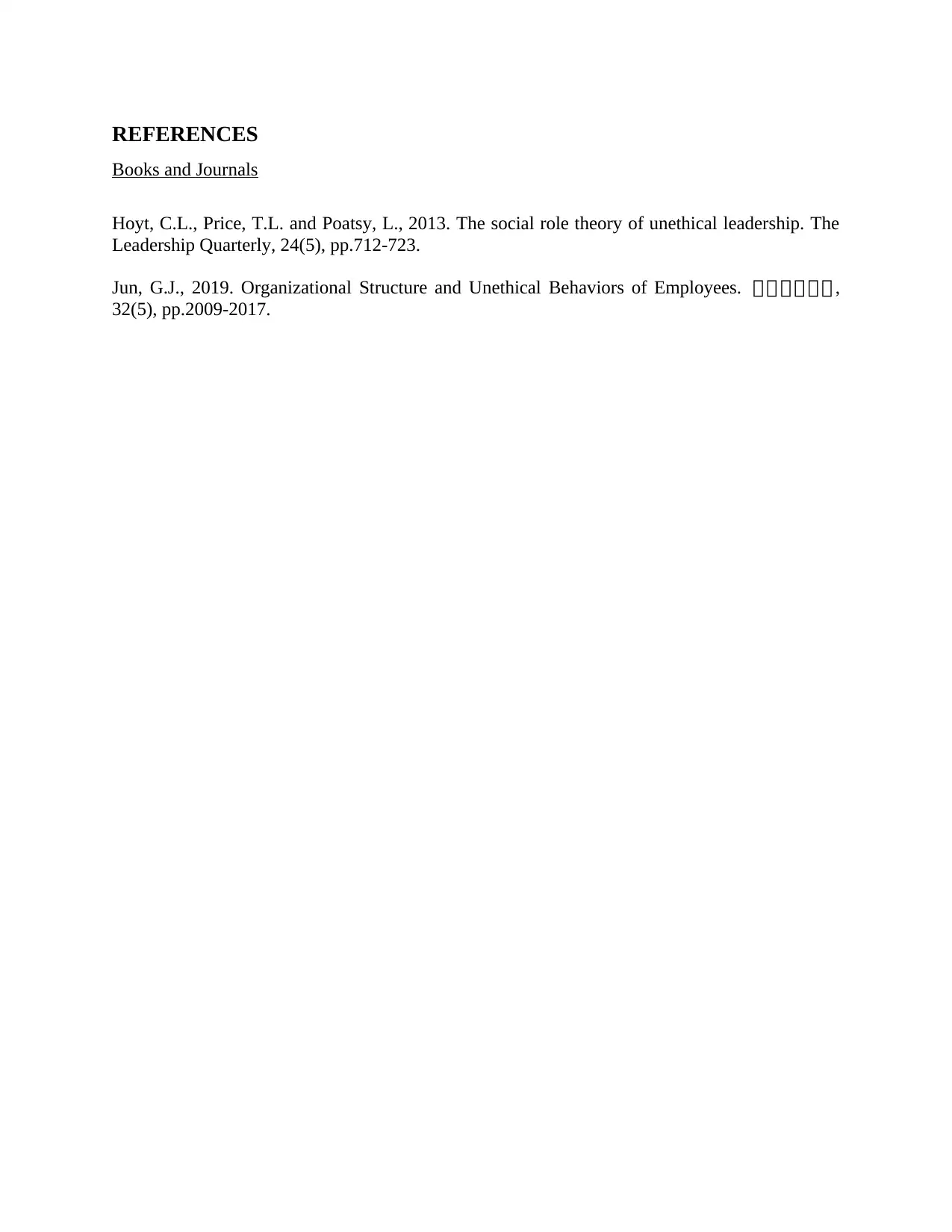
REFERENCES
Books and Journals
Hoyt, C.L., Price, T.L. and Poatsy, L., 2013. The social role theory of unethical leadership. The
Leadership Quarterly, 24(5), pp.712-723.
Jun, G.J., 2019. Organizational Structure and Unethical Behaviors of Employees. 산 산 산 산 산 산 ,
32(5), pp.2009-2017.
Books and Journals
Hoyt, C.L., Price, T.L. and Poatsy, L., 2013. The social role theory of unethical leadership. The
Leadership Quarterly, 24(5), pp.712-723.
Jun, G.J., 2019. Organizational Structure and Unethical Behaviors of Employees. 산 산 산 산 산 산 ,
32(5), pp.2009-2017.
1 out of 7
Related Documents
Your All-in-One AI-Powered Toolkit for Academic Success.
+13062052269
info@desklib.com
Available 24*7 on WhatsApp / Email
![[object Object]](/_next/static/media/star-bottom.7253800d.svg)
Unlock your academic potential
Copyright © 2020–2025 A2Z Services. All Rights Reserved. Developed and managed by ZUCOL.





